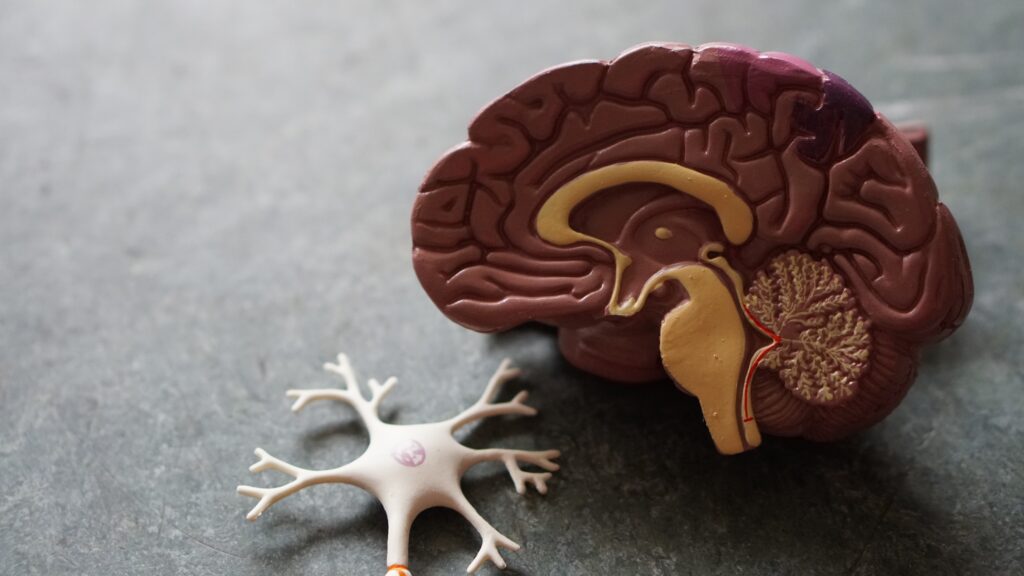In a lake, there is a patch of lily pads. Every day, the patch doubles in size. If it takes 48 days for the patch to cover the entire lake, how long would it take for the patch to cover half of the lake?
Advertisement - Scroll to continue
If it takes 5 machines 5 minutes to make 5 widgets, how long would it take 100 machines to make 100 widgets?
A bat and a ball cost $1.10 in total. The bat costs $1.00 more than the ball. How much does the ball cost?
IQ Test
If you love quizzes and math puzzles, we have the perfect test for you to try your hand at. It is the shortest IQ test in the world, with only three questions, but fewer than one in five can take it correctly.
If you’ve ever wanted to test your intelligence but don’t have time to bother with taking a long IQ test, maybe we have the perfect solution for you. Three math problems make up the world’s smallest IQ exam, which shouldn’t take very long. But be warned – it is quite difficult! Take The World’s Shortest IQ Test now!
Read more about The World’s Shortest IQ Test!

Your IQ is measured by the intelligence test, a psychometric evaluation. The bell curve of the normal distribution can roughly explain the distribution of the test outcomes.
The test is created to produce results for a certain population (country, age group) that are statistically dispersed on average by 20 and on average by 100 units (12 in other scales). Accordingly, a score between 90 and 110 signifies average intelligence (representing around 68% of all responses in the population), a score above 110 denotes more than average intellect, and a score below 90 denotes intelligence below average.
Because the performance of diverse activities, such as the knowledge of different words, facts, or scientific achievements, varies with cultural changes, IQ tests must be continually rectified and calibrated. Since the turn of the 20th century, an increase in population IQ has been seen throughout the nations of Western civilization.
The Binet-Simon Intelligence Scale, developed in 1905 by Alfred Binet, the father of the idea of mental age, is the forerunner of current IQ tests. Its subsequent iteration is the Stanford-Binet exam. This exam was first designed to identify elementary school kids who needed specialized instruction.
Binet made the supposition that while low IQ scores do not always exclude achieving strong academic achievements, they do need extra, specialized support and assistance during the educational process.
Modern IQ tests may often assess the degree of performance of certain cognitive abilities (linguistic, mathematical, associative, analytical, and spatial abilities) using brief activities, with the assignments assessing different abilities being switched up to prevent test respondents from becoming fatigued. The tests typically assess each of these fitness components independently, and the outcome is a calculation of the IQ score.
Do you like IQ tests and food? If so, you will surely like the combination of these two! We invite you to take our Chipotle IQ Quiz!
It is sometimes asserted that IQ tests only reflect the brilliance of their designers and that a test with a different design may provide a different conclusion. Numerous investigations, however, have demonstrated that measurements made using various procedures provide remarkably similar findings. Measures that attempt to measure combinations of talents rather than precisely defined skills provide results that are comparable to standard tests of intelligence.
Many times, IQ test critics claim that from a practical standpoint, a person’s unique mental powers are far more significant. Measuring these abilities might provide a person with an “intellectual abilities profile” that is valuable when, for instance, selecting a school or a vocation. The results of evaluating total individual fitness, however, are fairly near to the average IQ, according to research with IQ testing, except in a small number of cases, typically involving individuals with unusually high or low overall quotients.
Raven’s Progressive Matrices are a frequently used tool in addition to the WAIS-R, which is now the most common exam for adults.
Numerous psychologists think that all psychometric tests arbitrarily categorize people into “better” and “worse” categories by distorting and oversimplifying their mental and emotional abilities. In his book The Mismeasure of Man, for instance, Professor Stephen Jay Gould vehemently criticized the scientific underpinnings of psychometric tests and contended that they are actually a form of “scientific racism,” particularly when used to demonstrate the “superiority” of one social group over another. Testing was forbidden in the USSR beginning in 1936 for identical reasons.
Although there is still much debate around IQ testing from a scientific and social perspective, they are still used relatively often in psychological and sociological research, mostly because there aren’t any other, more accurate measuring methods available. While ordinary individuals sometimes exaggerate their outcomes, scientists who use them for study are often aware of their flaws.
Proponents of its usage point out that several studies have shown intriguing connections between IQ as determined by these tests and a variety of statistical information that would not have been found otherwise. For instance, Scottish research indicated that those with IQs below 85 have a 37% lower probability than those with IQs over 115 of living to the age of 76. Additionally, Charles Murray’s US research revealed a significant positive link between height, annual income, and IQ score. Another contentious research, IQ and National Wealth appear to support the notion that national wealth per capita and average IQ are generally positively correlated. The fact that “smarter” countries are performing better as well as the reality that richer countries have more impulses (more education, easier access to knowledge sources, more free time) may both contribute to the higher IQ of the people in these countries.
Another common criticism leveled at these assessments is that they unduly focus on a small subset of the mental skills that are relevant to everyone, such as emotional intelligence, creative talent, or creativity. Tests of creativity are not as accurate and dependable as tests of intellect, and statistical analyses of the data they yield do not allow us to draw the conclusion that creativity is a general element. Testing for emotional intelligence has been attempted, however, it is very debatable.
Another significant concern is the potential for artificially raising IQ by methodical, sustained practice in completing conventional intelligence test tasks. This implies that instead of assessing a person’s capacity to cope with novel situations, which is a real indicator of intelligence, these exams assess a person’s ability to solve familiar, typical issues quickly.
Do you like IQ tests and make-up? If so, you will surely like the combination of these two! We invite you to our Makeup Quiz – What Is Your Makeup IQ? Check it out now!
Several widely used websites provide IQ tests, however, there is debate regarding their validity and usefulness. The most crucial factor in these tests is their façade validity because the test’s content just serves as an indication of what is being “tested.” In actuality, they have dubious psychometric usefulness and don’t accurately gauge IQ.
The public is not given access to IQ tests since doing so might tamper with the outcomes of using them. These tests are up-to-date and calibrated for the population under study. To put it another way, the likelihood of performing better on an exam improves if you have the opportunity to “practice” it before taking it.
Therefore, IQ tests that are available online (as well as in the form of publicly accessible programs or written in publicly accessible periodicals) are frequently obsolete assessments that fail to account for the Flynn effect, which has infiltrated society in a variety of ways. They might also be quizzes created by unlicensed individuals seeking financial gain, for as through selling intelligence credentials or creating enticing TV shows to air commercials.
The assurance that the test subject has never encountered it before is a fundamental prerequisite for the legitimacy of the IQ test result. A proper environment for this purpose, assuring quiet, safety, and the absence of distractions, is one of the other severe requirements for accurate IQ testing.
Intelligence Quotient
The Binet-Simon test, developed by Théodor Simon and Alfred Binet in 1905, was the first assessment of children’s overall intellectual ability (intelligence), serving as the forerunner (though not the inventor) of the idea of IQ. The majority of the test was made up of mentally challenging exercises. With the assistance of the children, Binet examined a sizable number of tasks, assessed the complexity of each activity, and rated the tasks in order of increasing difficulty. Then he established the levels of work completion that, on average, kids of various ages reach. This made it feasible to determine if a certain child could complete the age-appropriate activities on this exam. Binet established the idea of “mental age” to explain the test’s findings. The factor used to determine a kid’s mental age was the oldest age level at which the youngster was able to complete the test tasks. If a 4-year-old youngster, for instance, completed test activities that were designed for a 5-year-old, this meant that his mental age was only 5, meaning that he is mentally 1 year above his age.
However, there were significant issues with the idea of mental age. In children of various ages, the same discrepancy between mental age and age has an entirely different clinical relevance. For instance, the difference between a 2-year-old child’s mental age and life age is incomparable to a 12-year-old child’s mental age and life age difference.

To further clarify the idea of mental age, German psychologist William Stern proposed to relate the importance of mental age to that of life age in 1912. In actuality, this meant figuring out the quotient, or ratio, between the real age of life and the mental age, which was established based on the results of the IQ test. This made it feasible to remove the uncertainty associated with utilizing the standard disparity between mental age and age as a measure of test performance. Additionally, Stern suggested multiplying the calculated value of the quotient by 100, which was useful since it eliminated fractions and made it easier to calculate and display the test result. The test’s outcome, determined using Stern’s method, is referred to as the intelligence quotient.
If you like IQ tests, we have another offer for you! Take IQ Test (2022) right now and find out how high your IQ is!
We provide you the fastest IQ test available anywhere in the globe! Can you accurately respond to the three questions on our test? Can you pass The World’s Shortest IQ Test? Take a peek for yourself right away!


